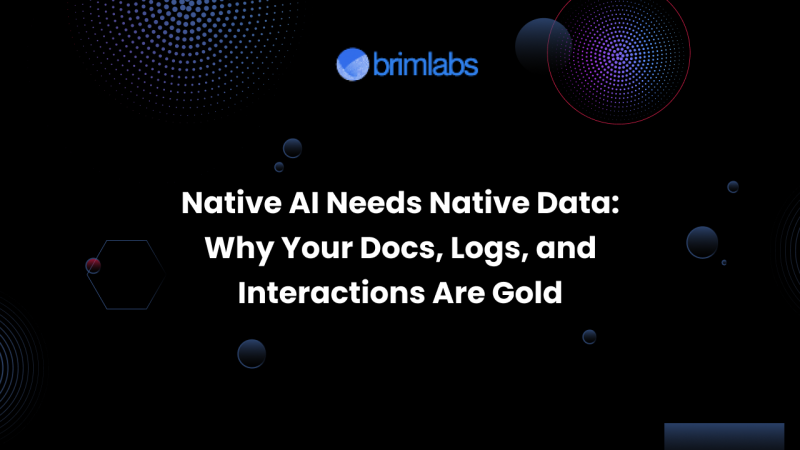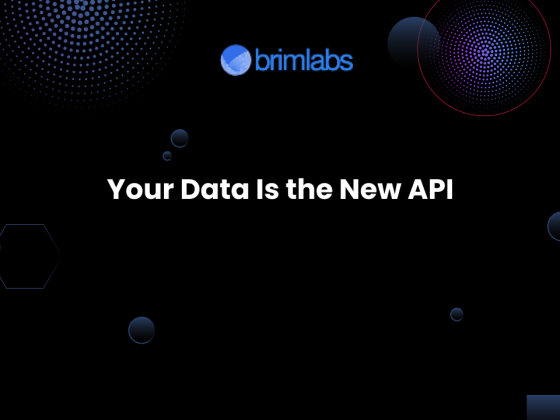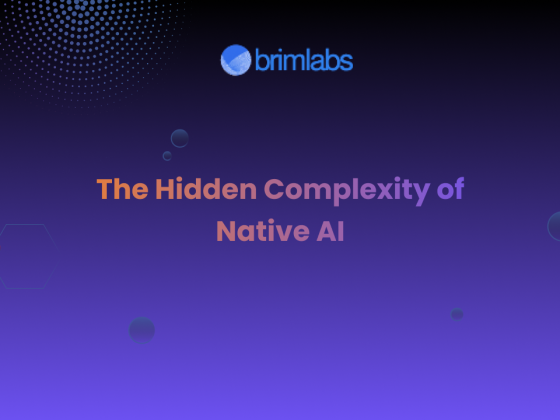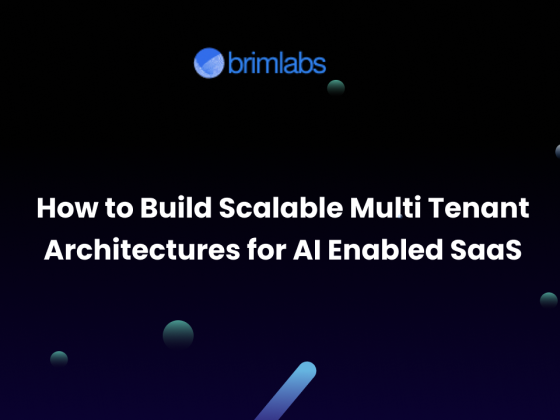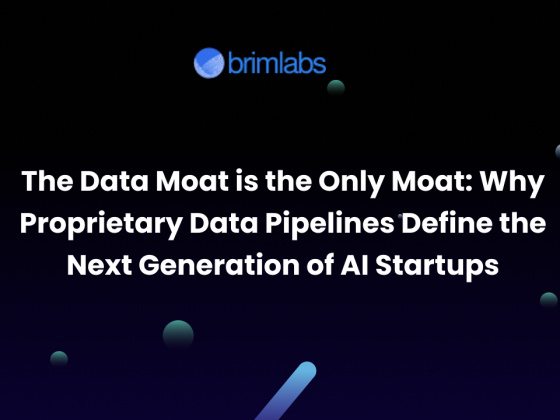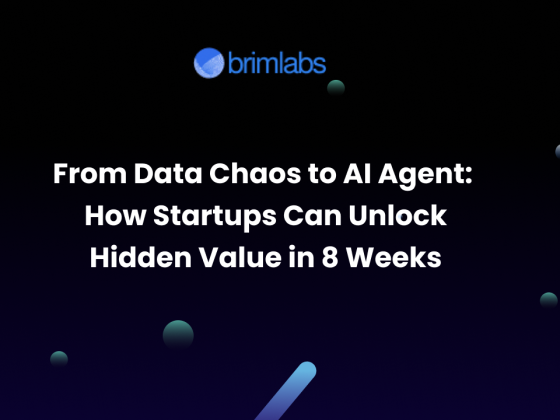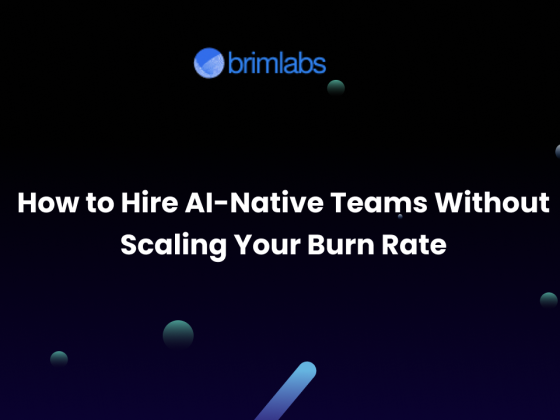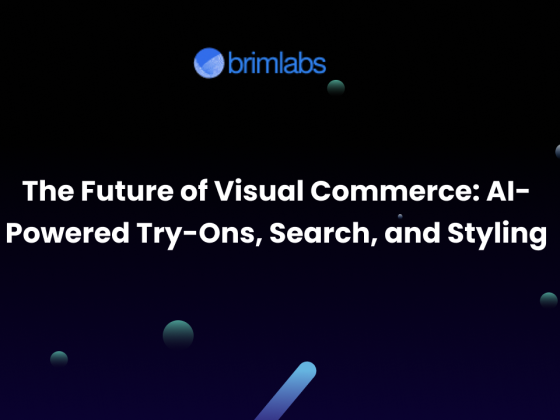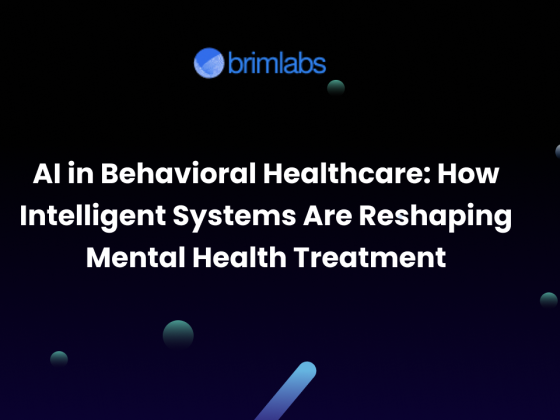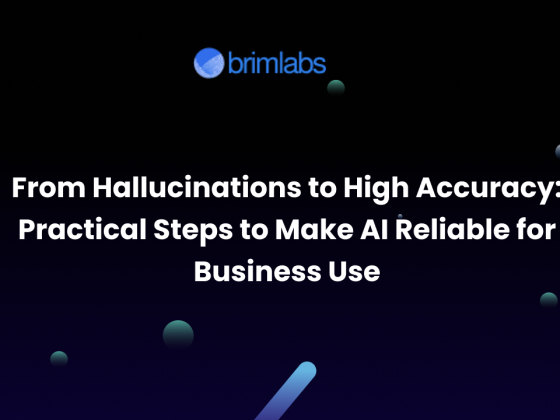There’s a growing myth in the AI world that access to powerful models is enough. But while foundation models like GPT-4, Claude, and Gemini are transformative, the real competitive edge lies elsewhere.
It lies in the data that only you have.
That includes:
- Product documentation
- Internal knowledge bases
- Sales and support transcripts
- System logs and behavioral analytics
- Slack threads, ticket systems, and dashboards
These aren’t just operational byproducts; they’re fuel for intelligent, contextual, and useful AI, the kind your competitors can’t copy.
Let’s unpack why this matters more than ever.
Why Generic AI Falls Short for Real-World Use Cases
Off-the-shelf AI tools, or what we often call plug-and-play AI, are easy to start with. They can write emails, summarize reports, or answer common questions, but they hit a wall when specificity enters the room.
For example:
- A plug-and-play chatbot might answer, “Our refund policy is 7 days.”
- But your actual policy? “7 days for digital products, 14 days for physical ones, unless they were discounted, then store credit only.”
Without your actual internal knowledge, the AI gets it wrong. That’s not just unhelpful, it can damage trust or even trigger compliance issues.
Now compare this to native AI, a system that has been trained or connected to your specific documents, logs, and user interactions. It understands your unique policies, edge cases, tone, and workflows. It doesn’t guess, it knows.
Let’s Break It Down: Native AI vs Plug-and-Play AI (Narrative Format)
1. On Data Ownership: Plug-and-play AI relies on public datasets or limited integrations. Native AI leverages your proprietary internal data, the kind that carries your operational DNA.
- Example: Brim Labs helped a compliance tech startup build an AI auditor that reads their risk matrices and operational checklists, not generic templates. The result? Audit prep went from 3 weeks to 3 days.
2. On Contextual Accuracy: Generic AI lacks deep domain context. Native AI, trained on your materials, mimics how your team solves problems, not how an internet-trained model might guess.
- Example: A SaaS company we worked with had 10,000+ support tickets. We used this historical data to train a support co-pilot that didn’t just respond, it mirrored how their best agents would resolve edge cases.
3. On Use Case Fit: Off-the-shelf tools work well for surface-level tasks. Native AI thrives in nuanced workflows: contract parsing, internal process automation, personalized onboarding, etc.
- Example: For a healthcare startup, Brim Labs built an AI agent that helped internal teams navigate HIPAA policies by searching their private compliance docs, not web-based content. That distinction matters when real-world stakes are involved.
4. On Strategic Value: Generic AI is widely available. Native AI becomes your moat. Even if your competitors use the same model, they won’t have your data, your workflows, or your customer conversations.
- Bottom line: Native AI creates a defensible edge. Plug-and-play creates feature parity.
Where the Gold Lives: Key Native Data Sources
If you’re wondering what “native data” actually looks like in your business, here are examples that can drive high-impact AI systems:
1. Internal Documentation: SOPs, product guides, onboarding manuals, and FAQs. These documents reflect how your organization thinks and operates.
- Use case: Train AI agents to answer team or customer questions with company-approved answers.
2. User Logs and Analytics: Login patterns, clickstreams, feature usage, error messages. These represent what users do, not just what they say.
- Use case: AI assistants that can predict churn, recommend feature adoption paths, or detect anomalies.
3. Support Tickets and Emails: These carry rich emotional and contextual signals. Every interaction is a lesson in how your customers think and what your team values.
- Use case: Build a support co-pilot that can draft empathetic responses based on how your team handled similar tickets.
4. Slack, Notion, and CRM Notes: Your internal communication holds rich tribal knowledge. These are hard to structure, but incredibly valuable when indexed correctly.
- Use case: Let AI agents fetch internal discussions or decisions about deals, product features, or roadmap history.
5. Contracts, Policies, and Legal Docs: Often overlooked, these provide structure, rules, and risk posture.
- Use case: Legal assistants who help sales teams flag compliance issues before legal review.
How to Start: Turning Native Data into Intelligence
Implementing native AI doesn’t require a full data science team. You can start lightweight and scale up. Here’s how:
Step 1: Audit Your Data Landscape: Map out where your internal knowledge lives, Google Drive, Notion, Zendesk, GitHub, CRM, or Slack. Inventory what’s valuable, repetitive, and frequently referenced.
Step 2: Clean and Organize: Raw data is rarely usable as-is. Remove noise, format consistently, and tag documents. Structured content makes retrieval and learning more efficient.
Step 3: Build a RAG Pipeline: Use RAG to feed your data into LLMs in real time. With tools like LangChain, Pinecone, and Chroma, you can embed and search documents efficiently.
Step 4: Build Agents, Not Widgets: Design autonomous or semi-autonomous agents to solve problems: AI onboarding guides, compliance checkers, internal assistants, or sales reply generators. Don’t just build a chatbot, build a co-pilot for key workflows.
Step 5: Monitor, Refine, Repeat: Track usage, collect user feedback, monitor for hallucinations, and iterate continuously. Native AI evolves with your organization.
Brim Labs in Action: Real Examples of Native AI
At Brim Labs, we’ve seen firsthand how native data transforms AI from novelty to necessity:
- In FinTech: We built an AI agent for a real-estate company that processed legacy mortgage workflows by reading internal underwriting guides and historical client files, outcome: 60 percent faster file handling and improved regulatory tracking.
- In Healthcare: For Clinica, we developed an AI assistant that interpreted patient symptoms and guided care flow based on internal triage documentation and treatment protocols.
- In Compliance Tech: A Big Data company partnered with us to train agents using their internal privacy risk models, contracts, and audit trails, resulting in real-time policy recommendations and decision support.
These weren’t surface-level automations. They were deeply contextual AI systems, powered by data only our clients could provide.
Final Takeaway: In AI, Context is Currency
The most valuable AI you build won’t be the one with the flashiest model. It’ll be the one that understands you best, your users, your business, your risks, your values.
And that only happens when you turn your internal docs, logs, and interactions into intelligent fuel.
You already have the gold. Now’s the time to mine it.
Ready to turn your internal data into intelligent systems?
Let’s co-build your Native AI Product. Book a discovery call with Brim Labs: calendly.com/brimlabs
Or learn more at www.brimlabs.ai.

